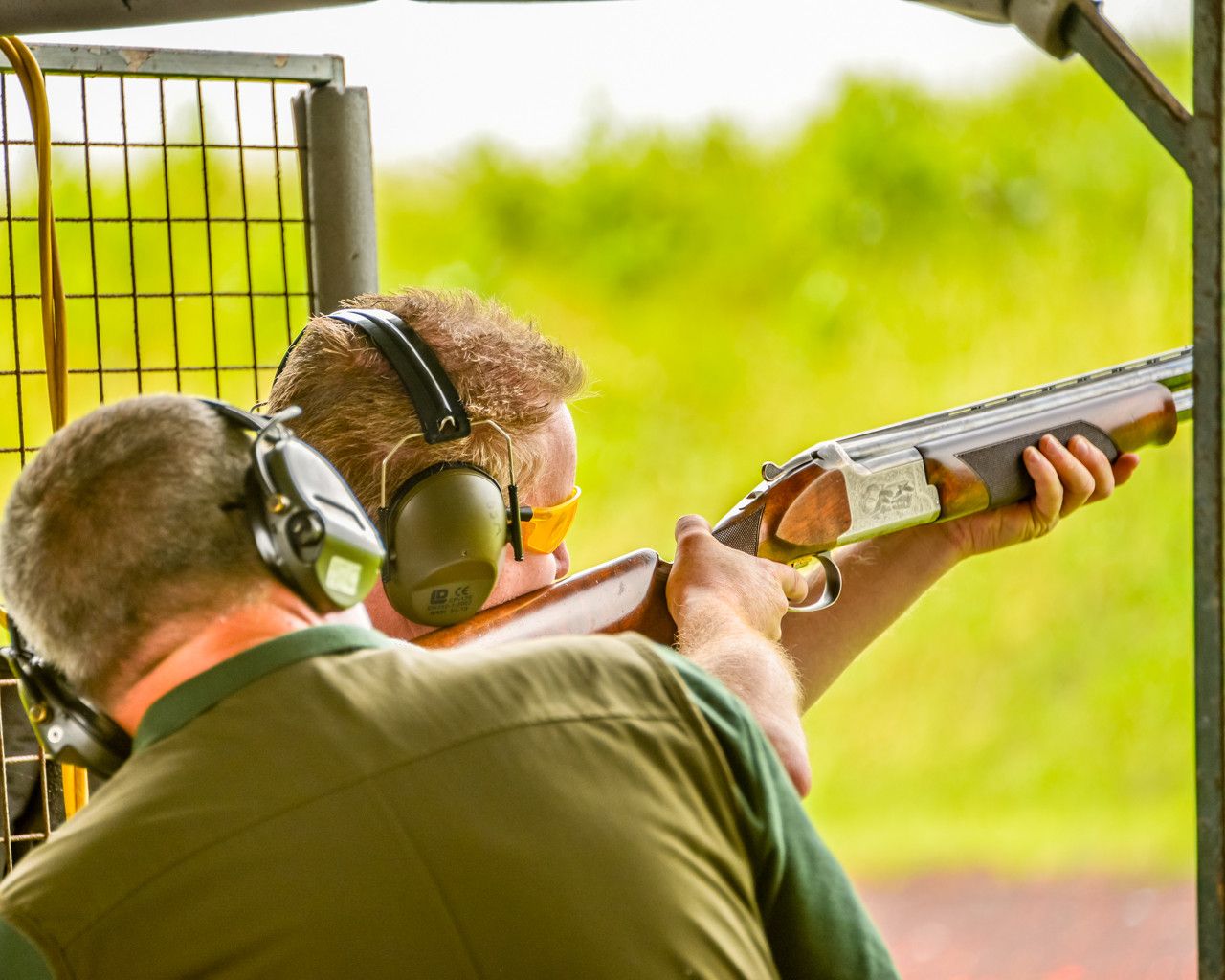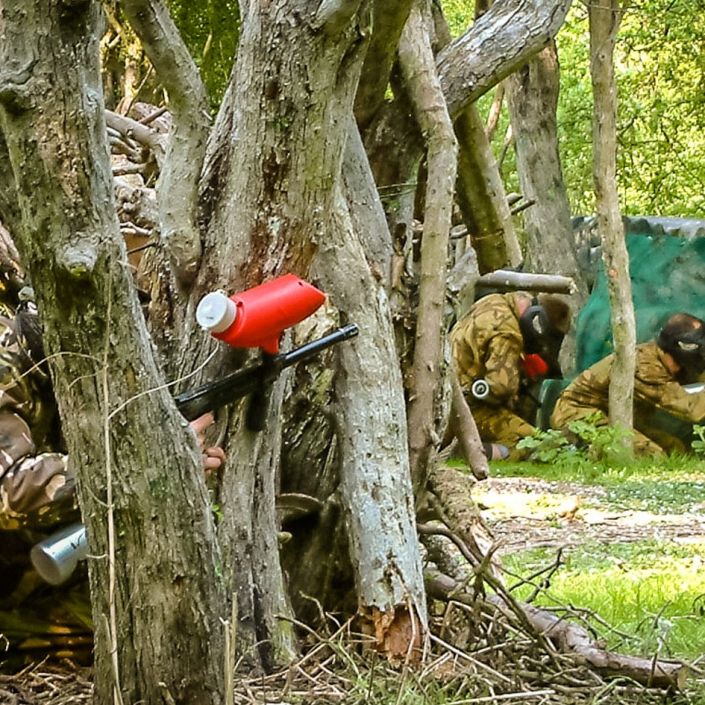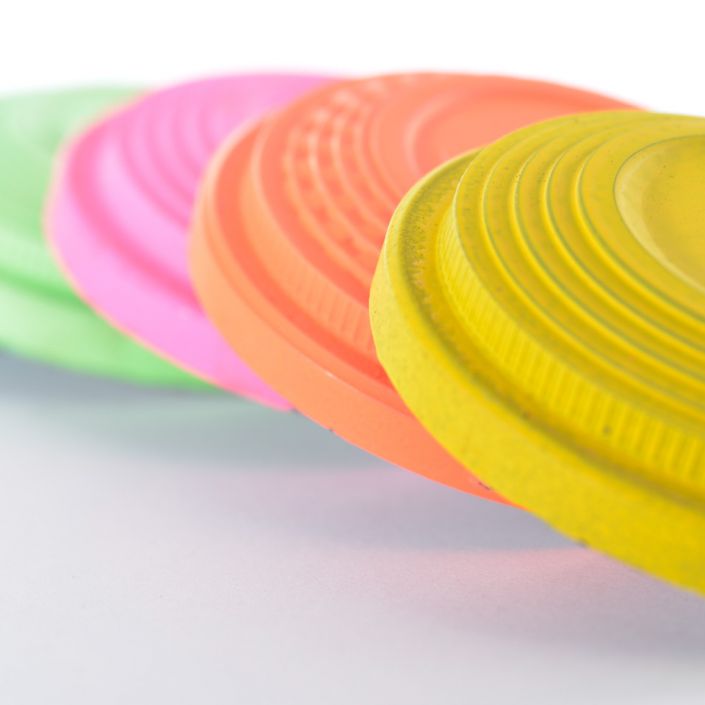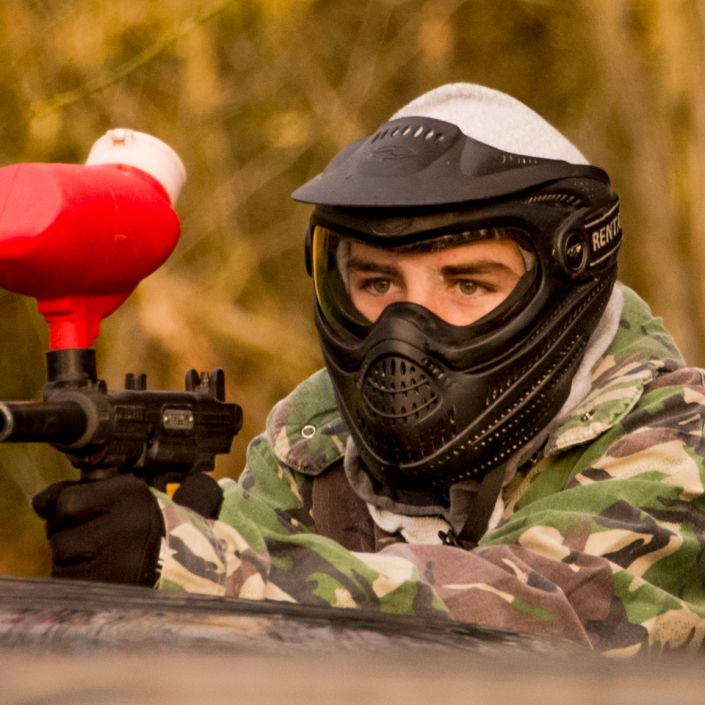The sport of Clay Pigeon Shooting involves using a shotgun to shoot at and break a circular flying target made from a fragile material.
Clay Shooting still retains many phrases from its historical "Live Bird Shooting" past when real birds, such as pigeons, where released from a trap positioned in front of a shooter (records date back to 1831). This practice developed into shooting Glass Balls filled with powder or feathers in an attempt to equalise the standard of targets and make the competition uniform.
The glass balls were eventually replaced by disks made from clay that allowed a truer flying target and longer, flatter trajectories closer to an actual bird flying.
Clay Pigeon Shooting has evolved into a sport enjoyed by a wide range of ages (often from ten years and upwards) at all levels from novice to Olympic competition. Safety is a priority at all shooting grounds with a firm set of safety rules being applied by all those involved.
The following guide provides information about the basic principles of clay pigeon shooting and provides details about the following:
- Clay Pigeons
- Clay Pigeon Traps
- Shotguns
- Cartridges
- Clay Pigeon Shooting Disciplines
- Safety
- Who Can Shoot
The Clay Pigeon
A Standard clay pigeon is an upside-down saucer shaped disk, 110 mm in diameter and made from a mixture of Calcium Carbonate (Limestone) and Pitch. Clays come in several shapes, sizes and colours to allow a wide variety of targets to be thrown against both light and dark backgrounds.
For example a Standard Blaze (painted bright orange) clay could be used to produce a medium speed clay passing in front of dark undergrowth.
A Mini Black (an unpainted clay is black in colour) clay (similar shape to a Standard but only 60mm in diameter) may be used to produce a deceptive overhead target. The clay can be black as it will be silhouetted against the sky and deceptive because a mini will leave the trap at a high speed but loose its speed rapidly – this makes it difficult to judge how much lead to give. The small size of the clay also makes it appear to be much higher in the air (shooters assume it is a Standard size clay) making it difficult to judge lead.
Rabbit clays are similar in size to a Standard Clay but made with thicker walls. Rabbits are rolled along the ground, at speed by a purpose built Rabbit trap. The rabbit clay will frequently jump into the air to produce a random and challenging target.
Clay Pigeon Traps
Clay pigeons are thrown into the air to produce a flying target by a machine known as a trap. A trap can fling a clay out to a distance of up to 120 metres. Most modern shooting grounds use automatic traps (fully automated, electrical powered machines that will throw a clay pigeon every time a remote button is pressed or acoustic sensor is operated) to produce consistent targets, allow greater target flexibility and increase operator safety.
Clay Shooting Guns
Shotguns are used to shoot clay pigeons. Each shot from a shotgun contains hundreds of small metal balls (usually lead shot) that spread out to form a cloud of rapidly moving projectiles. This makes it easier to hit a rapidly moving clay target, as it only requires approximately three pieces of lead shot to break a clay pigeon (a scorer has to see at least one piece of clay pigeon break off for a hit to be recorded).
Most clay shooters use Over and Under Double Barrelled Shotguns – a gun with two barrels mounted one above the other, although the more traditional Side by Side Shotgun is also used. Most clay shooters will use a shotgun with a barrel diameter of around 18.5 mm. This is known as a 12 bore or 12-gauge shotgun. Smaller diameter guns are also used (16 or 20 gauge) as these are lighter in weight (often suitable for younger or smaller framed shooters).
The internal diameter of the barrels often reduces at the end. This is known as choking and is used to alter the pattern of shot that fires from the gun. A barrel with parallel sides towards its end will produce a cloud of shot that spreads out more rapidly than a barrel that chokes down at the end.
A fully choked barrel will ensure that 70% of the shot will be delivered within a 30 " diameter circle at 40 yards. A more open barrel may only keep 50% of the shoot within the circle.
Many shotguns have fixed chokes (often one tighter than the other), others are known as multi-chokes that allow a sleeve to be screwed into the end of the barrel. The sleeves have various diameters to allow different shot patterns to be produced.
The distance the clay target is away from the shooter will often influence the selection of choke. A close target is easier to hit with an open choke as this allows the cloud of shot to spread out faster. A distant target is best shot with a tight choke as this will ensure the shot cloud stays closer together for longer – making it more likely for several pieces of shot to hit the clay and break it.
Cartridges
The cartridge contains lead shot, wad, charge and primer . A plastic case contains the components to allow rapid and easy loading into the shotgun. One end of the cartridge is made from metal and holds the primer. When struck by the shotgun's firing pin the primer produces a small explosion that ignites the main explosive charge.
The charge in modern cartridges is Nitrocellulose based (far safer and more stable than the historic black powder). The explosion pushes onto a plastic (sometimes made from biodegradable fibre) wad containing the lead shot (usually between 24 and 32 grams of lead). The wad and shot emerge from the barrel of the gun at around 1200 feet per second (400 metres per second). The lighter wad quickly loses its momentum and drops to the floor leaving the lead shot to gently spread out towards to the target.
The diameter of the lead shot is carefully controlled to ensure each cartridge contains shot of a similar size. Larger shot will travel further (better for targets at a longer range) whilst smaller shot will slow down faster. The weight of shot and the size of shot are printed onto the side of a cartridge. A typical clay shooting cartridge would contain 28 grams of 7 ½ size shot. This equates to around 350 pieces of lead shot with a diameter of around 2.4mm.
Certain disciplines (such as Skeet) involve close up targets and are usually shot with smaller shot – for example 28 grams of size 9 shot (580 pieces of 2mm diameter shot). The increased number of smaller sized shot makes it less likely that a clay pigeon will manage to pass through the cloud of shot unscathed.
Using cartridges larger than shot size 7 can be dangerous, as the shot will travel much further. Clay shooting grounds use a 300-metre downrange safety distance – this may be compromised if a larger shot is used (larger shot is used for game shooting).
Clay Shooting Disciplines
There are several different forms of clay pigeon shooting known as disciplines. Each discipline has a different set of rules and can be shot in regulated competition or for leisure. The disciplines can be divided into three categories: Trap, Skeet and Sporting.
Trap Shooting
Trap shooting incorporates a number of disciplines including: Down The Line (DTL), Double Rise, Automatic Ball Trap (ABT), Olympic Trap and Universal Trench. All involve a trap, located 15 metres in front of the shooter, throwing single or double clay targets away from the shooter at varying heights, angles and speeds.
Down The Line
Down The Line (usually referred to as DTL) is the most common trap discipline. The layout involves five shooting positions set 15 metres behind a single trap. The trap throws targets out to a distance of around 45 metres at a fixed height. The targets are thrown within a 44 degree arc from the traphouse (22 degrees either side of the centre line) but the angle of release randomly alters between each target.
The shooter at stand one will call for a target and attempt to shoot it. The full use of the gun is permitted so two shots are allowed. Three points are awarded for a single barrel kill, two points for a second barrel kill and zero for a loss (25 clays are shot at allowing a maximum score of 75 points). The shooter at stand two then calls for a target. This continues until each shooter (usually five shooters take part in a round) has shot at five targets. The shooters all then circulate around to the next stand and continue until five targets have been taken at each of the five stands.
A scorer is normally used for DTL to release the trap when a shooter calls "Pull", to decide if the clay has been hit and to record the score. The Scorer allows the round to be shot at a fairly rapid pace and ensures each shooter shoots at the correct number of clays.
Although in theory you will only need 25 cartridges for a round of DTL you will inevitably use more than this due to the following:
- Usually each shooter is allowed a single practice bird at their first stand before the round commences.
- Two shots are permitted at each target
- If a clay breaks when launched from a trap it is considered a "No-Bird" and will be shot again. Shooters will occasionally shoot at the No Bird in error.
Skeet
Skeet originates from America and involves two traps throwing two consistent targets. There are three main types of Skeet: English Skeet, Olympic Skeet and American (NSSA) Skeet. English skeet is the most common in the UK.
English Skeet involves participants shooting at the targets from seven shooting stands set out in a semicircle between the two trap houses. The traps throw the clays to cross each other almost at the centre of the semicircle.
At stands 1, 2, 4, 6 & 7 each shooter has a single clay from high tower (thrown from the high trap house / tower – approximately 2.5 metres from the ground), a single clay from the low tower (thrown from a low tower – approximately one metre from the ground) and a simultaneous pair of both high and low targets. At stands three and five no pair is taken. A single point is awarded for each clay broken. Shooters can take two shots at each of the single targets – a single point is awarded for a first or second barrel kill.
Skeet is usually shot as a squad of up to five people. Each squad member takes their turn at the first stand before the whole group moves onto the second. Squad members will usually take turns to button (release the clays by remote control button) and record the scores when they have had their go at shooting the stand.
Sporting
English Sporting is the most popular clay shooting discipline. It has no set rules regarding target speed, trajectory, angle, distance or elevation and will be different at every shooting ground. Sporting was originally intended to replicate live quarry shooting and appeals to both clay pigeon shooters and game shooters alike.
Sporting layouts tend to be spread around a countryside setting to allow targets to be presented emerging from trees, bushes and banks. A set number of targets will be given from a number of shooting stands throughout an area. Shooting stands / cages are used to ensure guns can only swing through a safe arc of fire.
A stand may involve targets being thrown from one or two traps in varying combinations such as:
- Following Pair. Upon the call of "Pull" a single clay is released followed by a second duplicate target as soon as the trap has been reloaded.
- Pair on Report. Upon the call of "Pull" a single clay is released. As soon as a shot is fired a second target is thrown (from the same trap or a different trap).
- Simultaneous Pair. Two clays are released at the same time from two separate traps.
- Single. Just one clay released at a time (shooter can use both barrels to hit the target)
A round of Sporting may consist of 60 targets spread over eight stands including simultaneous pairs, following pairs and singles. Stands are usually numbered and labelled with the number of targets to be taken and the combination. Most professional shooting grounds only use automatic traps controlled by remote (wired or wireless) release buttons. Sporting tends to be shot in small informal groups who will button for each other and record the scores (it is difficult for an individual to button, shoot and score). Competition shoots will involve a scorer at each stand or a scorer taking a squad around each stand in turn.
Most Sporting shooting grounds expect shooters to have a look at a target before they shoot it. A degree of wasted targets is accepted as long as it is reasonable.
Variations of English Sporting include: International (FITASC) Sporting, Super Sporting, Sportrap and Compak Sporting.
Sportrap
Sportrap consists of five shooting cages in a line and a series of traps firing targets at different speeds, directions and elevations. Each stand will present a combination of five targets in a set order including a single, following pair and simultaneous pair. Shooters take it in turns to shoot at each cage and are scored out of 25.
A scorer is used for Sportrap to release the combinations of traps and score. The order of targets taken from each cage is shown by a notice in front of / attached to the shooting cage.
Safety
There are a number of potential dangers whilst clay pigeon shooting. The obvious danger involving firearms exists but due to the gun control legislation and the self-imposed safety principles used by shooting grounds this danger is minimal.
Less obvious risks include noise, recoil and falling broken clay.
Noise
All clay shooters should wear hearing protection using either earplugs or earmuffs. The noise from firing a shotgun (approximately 150 decibels) will lead to permanent hearing damage unless suitable hearing protection is used.
Recoil
A 12-gauge shotgun will produce a healthy recoil (28 grams of lead shot coming out the gun at over 400 metres per second produces a fair amount of reactive force – i.e. recoil). Holding the gun correctly and standing correctly are vital if you want to avoid getting a bruised shoulder / cheek. Novice shooters should be taught the correct shooting techniques by qualified instructors using low recoil ammunition. Smaller guns can be useful for smaller shooters, although a smaller gun can produce as much if not more recoil as a normal 12 gauge shotgun (a 20 bore will often still fire 28 grams of lead – producing the same amount of recoil as a 12 gauge but the lighter gun can't absorb as much recoil as the heavier 12 gauge).
Falling Clays
Although most shooting grounds will ensure pieces of broken clay pigeon fall in a safe area it is sometimes impossible to prevent a rogue piece of clay from landing where shooters are standing. The nature of certain disciplines, such as Sporting, encourages exciting, challenging and varying targets. It is not uncommon for the wind to change direction or strength half way through a shoot resulting in broken clays landing in unexpected areas.
It is advisable for shooters to wear a hat to protect their head, as a piece of broken clay has sharp edges and can fall at great speed! Safety glasses are also important.
Who Can Shoot
Clay Pigeon Shooting can be enjoyed by a wide range of people. There are however limitations on age and gun licensing as described below:
Age limits
Shooters as young as ten can take part in clay shooting, but small children will find a shotgun heavy. Lighter guns, such as a 20 gauge, are available but it is advisable to start all new shooters off with professional tuition. A bad experience with recoil, due to poor gun mount, can leave a young shooter with a bruised shoulder and a reluctance to shoot again.
Upper age limits are irrelevant. As long as you can see the flying clay, control a shotgun throughout and be safe to everyone around you (including yourself) you are welcome to give it a go.
Gun Licensing
You need a shotgun licence to own a shotgun or to buy shotgun ammunition. You do not need a shotgun licence to shoot IF the shooting ground has permission from the Police under Section 11(6) of the Firearms Act 1968.
This will often mean a non-licence holder can shoot under the supervision of a nominated representative. This must be checked with the shooting ground in advance.



